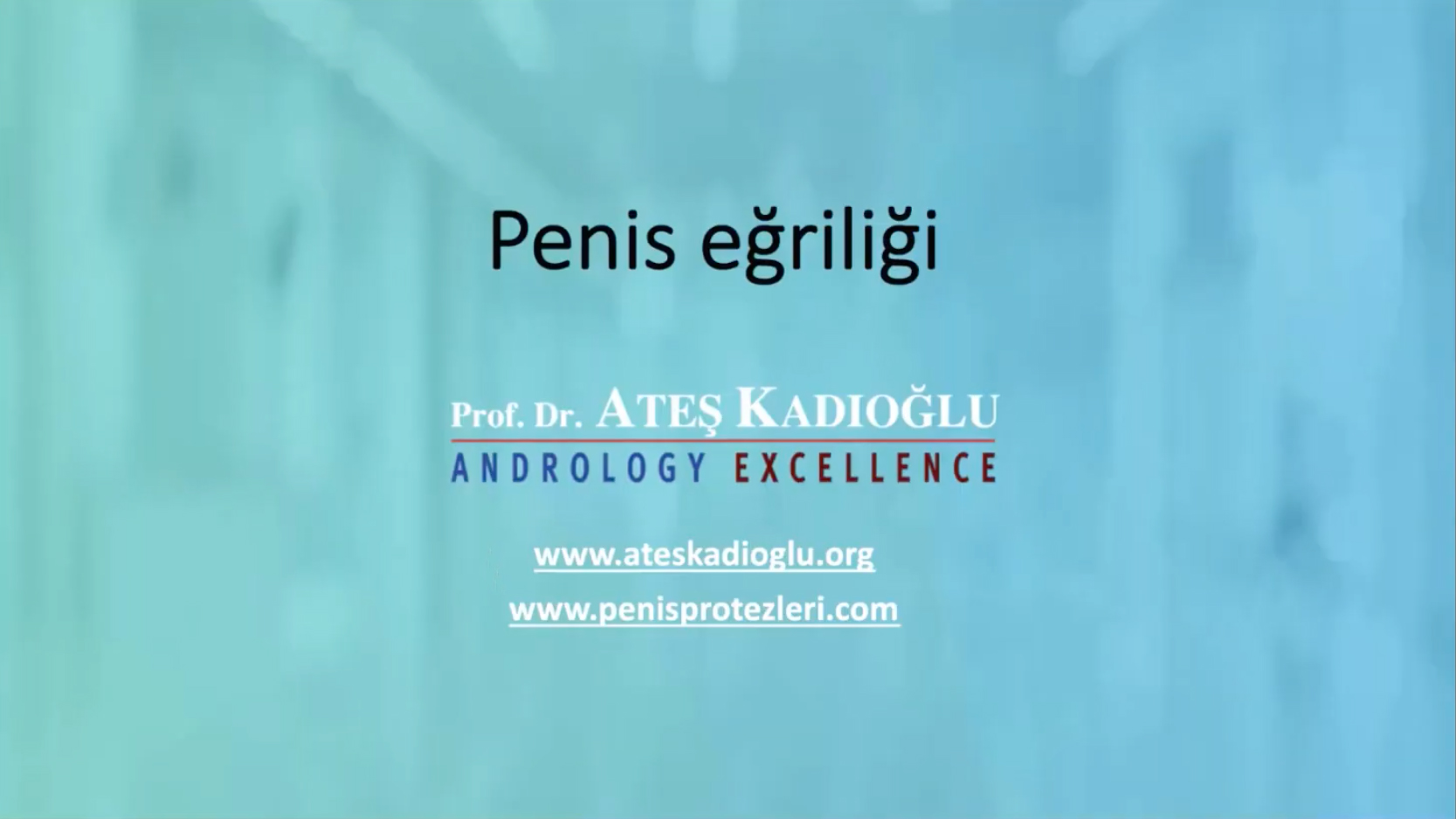
In the natural history of Peyronie's disease, estimated ED rates range from 22% to 54%. Although the etiology of ED associated with Peyronie's disease is not known exactly, increasing age, psychological factors caused by the disease, comorbidities, and pain contribute to the development of ED.
Penile prosthesis surgery is performed in patients who have poor erection quality in the stable period of the disease and who do not respond to pharmacological treatments. While more semi-rigid devices were preferred in the past, with the development of inflatable devices, it is currently seen that they are preferred more.
One of the most important factors for successful penile prosthesis implantation in patients with Peyronie's disease is the correction of the curvature after the prosthesis is placed during surgery. If the preoperative curvature is < 30°, no additional intervention is often required;
if the curvature is between 31° and 45°, there is a need for the intervention at a rate of 12%.
If the curvature is between 45°-60°, the rate of the need for the intervention increases to 75%. If the curvature is > 60°, it has been shown that the intervention is a must.
Comprehensive patient information prior to penile prosthesis implantation (PPI) helps maximize postoperative patient satisfaction. In the literature, patient satisfaction and partner satisfaction rates have been reported to be 72-100% and 89%, respectively.
Algorithm in penile prosthesis implantation:
- Implantation of the prosthesis,
- If the residual curvature is > 30°, manual modeling (the penis is bent to the contralateral side of the curvature and maintained in this position for 60-90 seconds and applied twice) is performed.
- If the residual curvature is > 30° after modeling, plication or plate incision can be applied.
- If the tunica defect is > 2 cm after incision, graft placement is recommended to prevent prosthetic herniation.
- In studies, the success rate of curvature correction with only penile prosthesis implantation has been reported to be between 33% - 90%. If the penile curvature is still > 30° following the PPI, there are several options. These are manual modeling, plication, and plate incision with or without graft.
Manuel modeling:
Manual modeling should be performed carefully. First, the prosthesis is placed and then the prosthesis is inflated to detect the deformity. The surgeon bends the penis against the direction of the curvature and continues to bend with the same pressure for 60 to 90 seconds. This process can be performed twice. During the modeling process, pressure should not be applied to the glans penis to prevent urethral injury.
Plication:
If the curvature is < 30° after modeling, additional treatment is not recommended. The prosthesis will act as an internal tissue expander and the curvature will probably be fixed within 6-9 months. On the other hand, if residual curvature persists, releasing incisions on the concave side and plication sutures on the convex part of the penis can be applied.
Plication during penile prosthesis implantation can also be performed for residual curvature in these cases. The plication to be applied after prosthesis placement is associated with the risk of perforation of the device and is therefore not preferred. Alternatively, plication can be performed prior to prosthesis insertion. Complete penile recovery has been reported in the literature.
Incision and/or graft:
The procedure is usually performed with a subcoronal circumcision incision in addition to the penoscrotal or infrapubic incisions, or a subcoronal circumcision incision alone. First, the tunica is reached and the tunical incision is performed according to the Egydio technique (Y shape). At the same time, the rollers are lowered, the neurovascular bundle is suspended, and the tunica is released with cautery, paying attention to the preservation of the cavernosal tissue on the implant. If coloplast cylinders are used, the energy should be reduced to <30 watts. If these incisions create a tunica defect greater than 2 cm, patching with a graft is recommended to reduce the risk of recurrent curvature or herniation of the rollers as a result of contracture. For prosthetic surgery, autologous and allograft or xenograft tissues can be used; however, autologous rectus fascia and SIS and pericardium are the most commonly used and recommended tissues among ready-made grafts. Dermal grafts are not used in PPI due to high infection rates.
In recent years, techniques including simultaneous penile length restoration with prosthesis implantation have been described in Peyronie's patients with severe penis shrinkage. In the Sexuality and Reproductive Health Guideline published by the European Association of Urology in 2021, recommendations were made regarding these techniques. According to this;
- Sliding technique: Not recommended due to reported cases of glans necrosis as a result of joint release of the neurovascular bundle and urethra.
- MoST (Modified sliding technique)*
- MUST (Multipl-slit technique)*
- MIT (Multiple-incision technique)*
*These should be performed by experienced surgeons who have operated many similar cases
